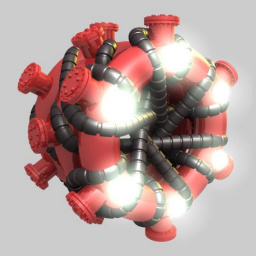Rubikon: Difference between revisions
Jump to navigation
Jump to search
No edit summary |
mNo edit summary |
||
| Line 16: | Line 16: | ||
== External links == | == External links == | ||
* Rubikon at GDC 2014 — {{youtube|1RphLzpQiJY|page = watch|Valve's Physics for Game Programmers}}. | * Rubikon at GDC 2014 — {{youtube|1RphLzpQiJY|page = watch|Valve's Physics for Game Programmers}}. | ||
* Document from GDC 2014 — {{link|plain|media.steampowered.com/apps/valve/2014/Sergiy_Migdalskiy_Debugging_Techniques.pdf|Sergiy Migdalskiy Debugging Techniques.pdf}} ( {{ | * Document from GDC 2014 — {{link|plain|media.steampowered.com/apps/valve/2014/Sergiy_Migdalskiy_Debugging_Techniques.pdf|Sergiy Migdalskiy Debugging Techniques.pdf}} ({{Wayback|0/https://media.steampowered.com/apps/valve/2014/Sergiy_Migdalskiy_Debugging_Techniques.pdf|Archived version}}). | ||
Latest revision as of 02:48, 13 October 2025
Rubikon is Valve's custom CPU based[1] physics engine used in Source 2. It replaces Havok, which is the main provider of physics for Source engine games.
Valve switched from Havok to Rubikon in order to reduce licensing cost.
Forks
![]() S&box uses modified version of Rubikon physics engine called "Box3D", which was designed to be constantly updated.[2]
S&box uses modified version of Rubikon physics engine called "Box3D", which was designed to be constantly updated.[2]
External links
- Rubikon at GDC 2014 —
 Valve's Physics for Game Programmers.
Valve's Physics for Game Programmers. - Document from GDC 2014 — Sergiy Migdalskiy Debugging Techniques.pdf (
 Archived version).
Archived version).
References
| References | ||||
|---|---|---|---|---|
|
